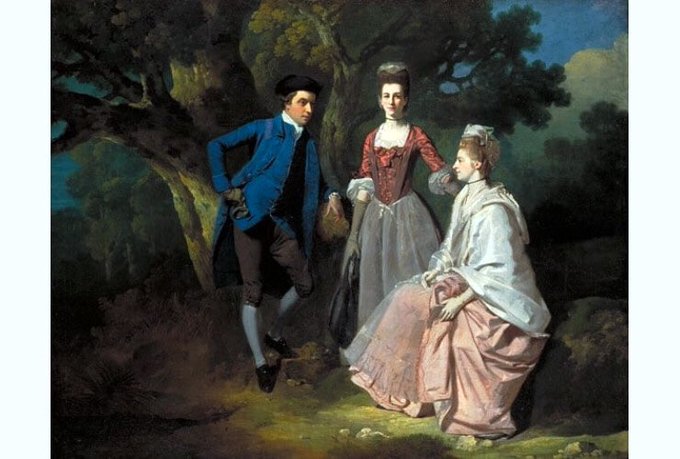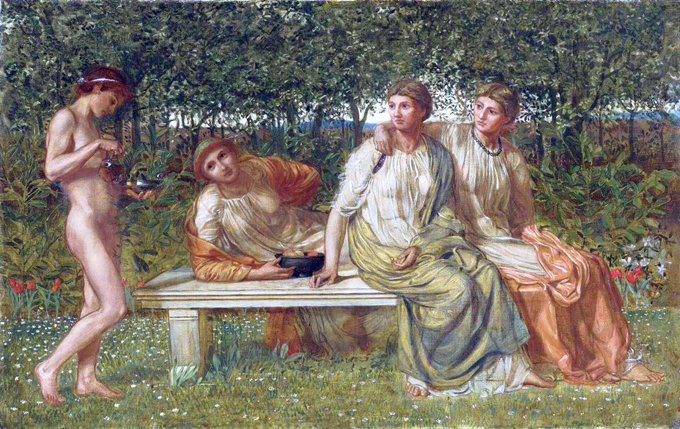His landscapes are pure PRB & have a mystical romantic quality against which he placed his ideal girl & ideal man. A Hamadryad (1893), A Naiad (1893) & Study for La Belle Dame sans Merci (c1893)
Donce Far Niente (1879), Flower Stall (1880), The Household Gods (1880) & Diogenes (1882). The influence of Alma-Tadema, Leighton & Moore is seen in these works
Born in Rome to English painter parents he enrolled in the RA (1871)& exhibited at their annual shows. His interest was in Arthurian & Classical mythology. Undine (1872), Gone but Not Forgotten (1873) & The Unwelcome Companion (1873)
Here are the romantic subjects that he indulged in, in his later career. They lack the authenticity of his earlier works but were commercial. The Return from Market (1791), Helena & Bertram (1793), The Comedy of Errors (1794) & Winter (1793-4)
Amongst his most famous works is his Interior of the Irish House of Commons (Ireland had its own Parliament with only Protestant aristocrats represented), 1780. Travellers Resting on a Country Road (c1784) & Pastoral Scene (nd)
Where Wheatley turns away from his group scenes, set against an external landscape, his pictures are less successful. Twelfth Night (1771-2), Mother & Child (c1775), The Wakefield Family (c1774) & John O’Neill, Viscount O’Neill of Shane’s Castle (c1780)
Wheatley’s genius is to place figures in a landscape setting that emphasises their elegance & patrician outlook. The Harvest Wagon (1774), Family Group (c1775), Portrait of a Man (1775) & Jervoise Clarke-Jervoise (c1775)
The ancient landscape of Avebury was to inspire some of his greatest works in 1934. Around that time he moved into London & then travelled to France, Gibraltar & Africa. Landscape of the Megaliths (1937), Wood on the Hill (1937) & Druid Landscape (c1938)
He left the Slade after a year & exhibited from 1912. He worked with Roger Fry in 1914 & was gaining some success. The Cliffs to the North (1912), The Falling Stars (1912), Night Landscape (1912) & The Wood on the Hill (1912)
The Marble Seat (1865). The most noticeable aspect of Moore’s depiction of women is that he paints women as goddesses & cyphers. There is no sexual objectification but neither is there empathy or sensuality. It’s as if Classical statues have come to life.


































